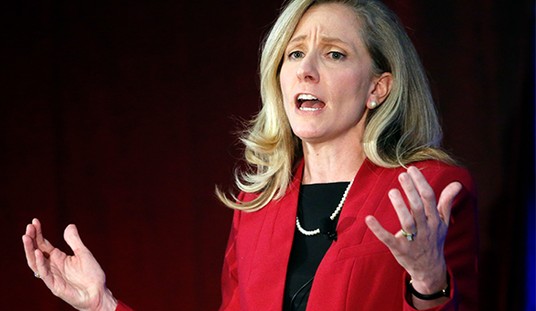“The facts themselves are pretty unassailable,” says an economist who reviewed the latest canon in the political fight over redistributive policies. “How you want to interpret them is the question.” The New York Times dissects the study from Harvard that the Left is grasping to show the urgent need to address “income inequality,” and finds that it’s not exactly quite as advertised. Income mobility — the ability to improve one’s standing in the US economy — has not grown over the last few decades, but it’s not falling, either. In fact, it’s held remarkably steady since the 1950s:
The study found, for instance, that about 8 percent of children born in the early 1980s who grew up in families in the bottom fifth of the income distribution managed to reach the top fifth for their age group today. The rate was nearly identical for children born a decade earlier.
Among children born into the middle fifth of the income distribution, about 20 percent climbed into the top fifth as adults, also largely unchanged over the last decade.
To compare their results to those for earlier decades, the authors noted that a previous study of children born from 1952 to 1975 — by Chul-In Lee and Gary Solon — found broadly similar and steady levels of mobility. Taken together, the studies suggest that rates of intergenerational mobility appeared to have held roughly steady over the last half-century, Mr. Chetty said.
That’s not to say that the current rates are necessarily optimal, either. Like most trend lines, the qualitative is much more subjective than the quantitative. The study notes that other nations have better rates of income mobility, such as Denmark, which suggests that we can do better. However, the Times continues in its analysis by pegging the point in time when the US started becoming less economically mobile:
Another earlier study — of the late 19th century, by Joseph P. Ferrie — suggested that mobility was higher then in the United States than in England, Mr. Autor noted. Sometime after the 1920s, though, social mobility in the United States appeared to have declined, the Ferrie study found.
Let’s see. Sometime after the 1920s, but before the 1950s, when the rates stabilized … what may have happened in that time period? Perhaps the launch of massive redistribution programs might have impacted that trajectory? That’s correlation more than causation, but it’s at least a change to which one can correlate.
Financial Times columnist Samuel Brittan wants everyone to banish “inequality” from their playbooks, noting that equality isn’t ever going to be achieved. In fact, no one seems clear on what exactly is supposed to be equalized, let alone how to get there, and he also points out the New Deal as the basis for this new push:
Many of the remedies advanced by the left would only make things worse. And the right are inclined to copy them. For instance, in Britain we have had the strange spectacle of a conservative chancellor, who is not on the progressive wing of his party, urging a rise in the minimum wage. A medical acquaintance of mine, with no pretensions to economic expertise, immediately saw through this ploy. If earnings rose, more tax would be gathered. Even if many of those immediately affected were below the tax threshold, an increase at the bottom might raise the whole earning structure in nominal terms and thus benefit the exchequer.
There was a time when rightwing academics were quick to point out that an increase in the cost of labour would put more people out of work. In any case, tackling the problem by pushing up wages would increase costs and make matters worse. This could be offset by devaluations. But what would then become of the inflation targets on which governments have set such store? And would real wages benefit? A devaluation is normally regarded as a way of cutting real wages by the back door.
Many of the other suggestions for easing the pressure on the mass of wage-earners belong to the list of worthy policies that have been espoused by most governments since the end of the second world war, if not even earlier. Some of them echo the less successful aspects of Franklin Roosevelt’s New Deal, an example being the rebuilding of union strength.
Nevertheless, in the least surprising political development ever, Barack Obama will use his State of the Union speech to focus on income inequality, launching his 2014 narrative strategy that could just as well be titled “Let’s Get Everyone To Stop Talking About ObamaCare.” Of course, it might get a little uncomfortable when people point out that ObamaCare was the White House/Democratic effort to address inequality in health insurance coverage …. and look how well that’s turning out. Just wait until Obama tries it with the other five-sixths of the economy!
He’s going to need divine intervention to avoid the consequences of his first big inequality project, let alone any of his new agenda items. For that purpose, he’s traveling to the Vatican to meet Pope Francis, who has also challenged the world to address inequality. The problem for Obama, as I explain in my column for The Fiscal Times, is that the rhetoric is similar but the agendas couldn’t be more opposed:
Even on policy, Obama will find Francis a challenge. The Obama administration, for instance, forced an end to a school voucher program in Washington DC – where the federal government has direct jurisdiction – that helped educate poor children and prepare them for economic success. Archbishop Thomas Wenski of Miami chairs the U.S. Conference of Catholic Bishops’ Committee on Domestic Social Development, including the USCCB programs to fight poverty, and he brought up that decision when speaking to the Washington Post about the upcoming meeting. “If Obama would see our way with the voucher system,” Wenski said, “we could help get a lot of kids out of poverty by giving them the tools to have a successful life through Catholic schools.”
This brings up two huge issues that will certainly be on the Pope’s agenda on March 27th. First, the efforts by Barack Obama and his HHS to redefine and limit religious expression to merely freedom to worship within the confines of a church hammers the Catholic Church and its affiliated organizations in their own efforts to fight poverty and want in the US.
Catholic schools, hospitals, clinics, and even convents now face having to either facilitate contraception against their own doctrine or shut down as ruinous fines bankrupt them. Don’t expect Francis to give Obama a free photo opportunity without forcing him to answer for that attack on Catholic efforts to help in the effort Obama claims to prioritize.
Even more fundamentally, Francis will challenge Obama on abortion. As his message to Davos makes clear, the very undergirding principle for social justice is the equal sanctity and dignity of all human life at all stages of development. American presidents who travel to the Vatican to declare inequality and poverty as the most pressing issues of the day, while at the same time celebrating the anniversary of Roe v Wade by declaring that “this is a country where everyone deserves the same freedom and opportunities to fulfill their dreams” [are] itching for a fight.
Or will find one.
Besides, any discussion of income inequality and wage stagnation should begin with this chart of the civilian workforce participation rate under Obama’s economic policies (from the Bureau of Labor Statistics):
Obamanomics has pushed millions of people out of the workforce, even from the point of technical recovery in June 2009 (10.87 million), or from the White House’s own artificial point of calculating stimulus response in February 2010 (8.53 million). That is why the workforce participation rate has hit 36-year lows, reached in an era where much fewer women worked. Until we fix the issues of job creation by making it simpler and cheaper to employ people — which will also make labor rates more competitive — we’ll just be “redistributing” deck chairs on the Titanic.









Join the conversation as a VIP Member